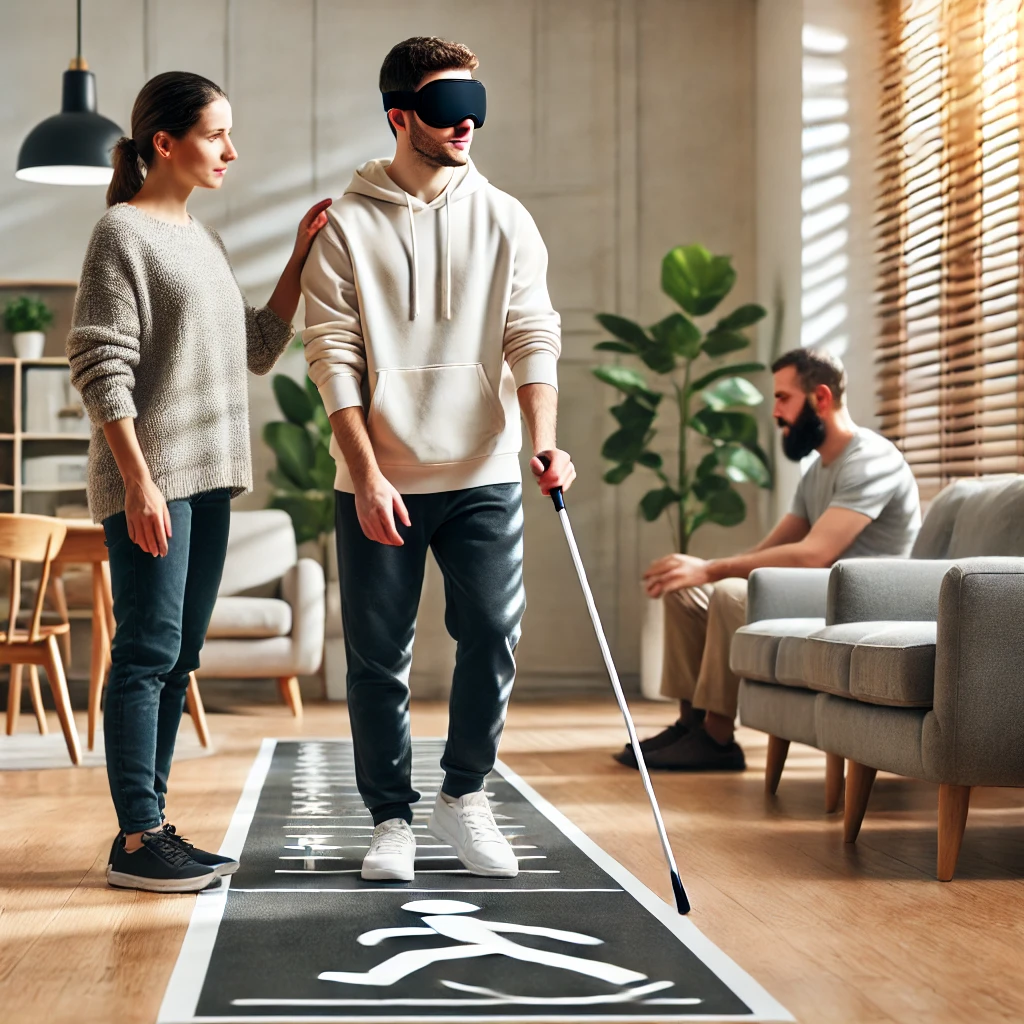Low Vision Rehabilitation
At a Glance: Low Vision Rehabilitation
- Purpose: Helps individuals with low vision maximize independence and adapt to vision loss.
- Who Benefits: People with vision impairments from conditions like macular degeneration or glaucoma.
- Key Tools: Magnifiers, adaptive software, home modifications.
- Services: Vision assessment, daily skills training, emotional support.
- Goal: Improve daily function, safety, and quality of life.

Low Vision Rehabilitation: 5 Ways to Regain Independence
Low vision impacts the ability to perform daily tasks, affecting independence and quality of life. Low vision rehabilitation offers a path to adapting to these challenges.
Through personalized services, assistive devices, and emotional support, individuals with low vision can regain confidence and lead fulfilling lives.
Understanding Low Vision: Causes and Types
Low vision arises from various conditions, such as macular degeneration, diabetic retinopathy, glaucoma, and cataracts. Each affects vision in unique ways, requiring individualized care. Understanding the different levels and types of visual impairment helps shape effective rehabilitation plans.

Assessment and Evaluation in Low Vision Rehabilitation
A successful rehabilitation journey begins with a comprehensive assessment by an eye care professional. This evaluation includes visual acuity tests, contrast sensitivity assessments, and visual field tests to determine remaining vision. Personalized plans are then developed based on these insights and the individual’s daily needs.

Comprehensive Services in Low Vision Rehabilitation
Low vision rehabilitation includes a diverse set of services tailored to empower individuals in their daily lives. Here’s a breakdown of primary rehabilitation services:
Assistive Devices: Magnifiers, telescopes, and closed-circuit televisions (CCTV) are introduced to aid daily tasks like reading, watching TV, and writing. With proper training, these devices can significantly enhance the ease of handling various activities.
Lighting and Contrast Adjustments: Proper lighting and contrast are essential for managing low vision. Rehabilitation specialists recommend optimal lighting setups and contrast enhancements, such as task lighting and color contrasts, to improve visibility and safety in daily tasks.
Daily Activity Training: Learning practical techniques for cooking, reading, medication management, and more helps individuals with low vision manage essential tasks. Adaptive tools, such as color-coded labels and large-print organizers, allow for greater independence.
Independent Living Skills: Skills like self-care and household management are essential for maintaining autonomy. Through training in low vision rehabilitation, individuals gain confidence and control over daily responsibilities.
Home Environment Modification: Home modifications, like tactile markers on appliances, non-slip rugs, and high-contrast tape on stair edges, create safer and more navigable living spaces. These changes make home life safer and more accessible.
Social Support and Community Resources: Specialists connect individuals to support groups, transportation options, and community resources, reducing isolation and promoting emotional well-being.
Emotional Support and Counseling: The emotional impact of vision loss is significant, and rehabilitation often includes counseling or support groups to foster resilience and mental health.
Employment and Job Training: Rehabilitation services include job training and workplace adaptations to support continued employment. With assistive technology and workplace modifications, low vision need not limit career opportunities.
Transportation Training: Independent travel is crucial, and rehabilitation includes training in safe navigation of public transit and community transit options, restoring freedom and mobility.
Technology and Assistive Software Training: Learning to use screen readers, voice-to-text software, and other accessibility tools helps individuals stay connected and productive.
Sighted-Guide Techniques: Individuals learn how to walk with a sighted guide safely, enabling confident movement in complex environments.
Rehabilitation Tools and Techniques
Rehabilitation combines various tools to maximize vision, including:
- Optical Aids: Magnifiers, telescopic devices, and prescription glasses to improve clarity.
- Electronic Aids: Screen readers and adaptive software, making digital information accessible.
- Non-Optical Aids: Enhanced lighting, tactile markers, and environmental modifications for safer daily navigation.
- Training Techniques: Skills like eccentric viewing help individuals make the most of their remaining vision.
Adaptive Strategies for Daily Living
Daily life with low vision requires specific strategies:
- Home Adaptations: Organizing items, using color contrast, and installing extra lighting for a more accessible environment.
- Mobility and Orientation: Techniques for safely moving in and out of spaces, with or without mobility aids.
- Daily Tasks: Practical tips for reading, cooking, and other activities, making everyday tasks more manageable.

Psychosocial Support in Low Vision Rehabilitation
Living with low vision can be emotionally demanding, often leading to anxiety or depression. Rehabilitation includes access to counseling, support groups, and family education to encourage emotional support and build resilience.
Educational and Vocational Support
Low vision rehabilitation includes educational and job-related assistance, ensuring individuals have the resources and adaptive tools needed to succeed academically and professionally. Legal rights for accessible education and workplaces help ensure equity and opportunity.
Advances in Low Vision Rehabilitation
Technology continues to advance rehabilitation with AI-driven visual aids, gene therapy, and other emerging tools, paving the way for even more accessible and effective support for individuals with low vision.
